|
| |
FAMILY COENAGRIONIDAE
- This page contains information and pictures about Pygmy Wisp
Damselflies that we found in the Brisbane area, Queensland, Australia. They are
also known as Midget Wisp
Damselflies.
-
 - Male, body length 20mm
-
- This is
the smallest damselflies we found. For the male, the head and thorax are pale green in
colour with black pattern. Abdomen is pale blue with black with the orange-red tail
light.
-
- From the reference information, in Australia there are three damselflies
with orange-red tip. All three can be found in Brisbane, although we need
some luck to find either one of them. They are the Pygmy Wisp, the Red-rumped Wisp
and the Red-tipped Shadefly.
-
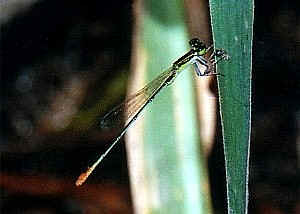 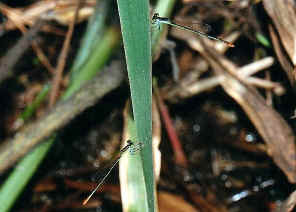 - Male
-
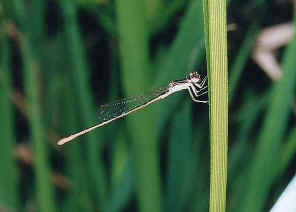
 - Female body length 25mm
-
- Female is pale black in colour with some pale
red under the abdomen. We saw them once feeding on tiny mosquitoes.
-
- They are not easy to find for they are very small in size, even thinner than
a needle. They usually hide at low positions near the water edge, among thick
vegetations. So they can be seen only when you were standing in the water. Once
you find them you can always have a close look at them for they fly neither fast
nor far.
-
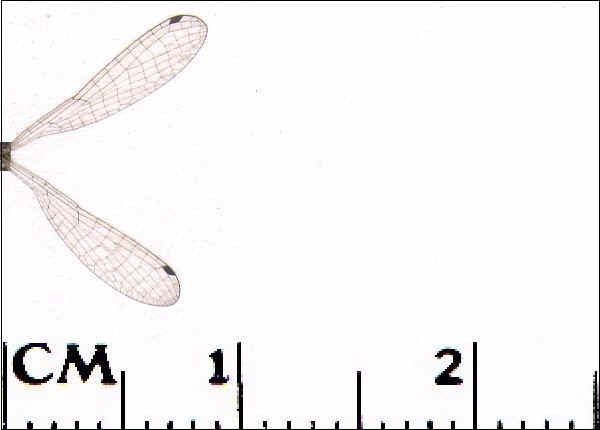 - Wings of male Pygmy Wisp
-
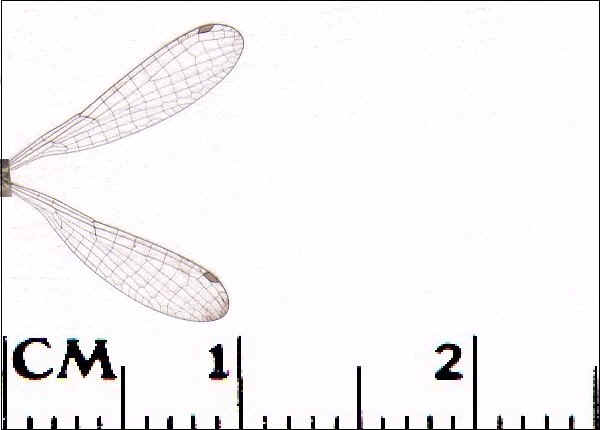 - Wings of female Pygmy Wisp
- Reference:
- 1. The Australian Dragonflies - CSIRO, Watson, Theisinger &
Abbey,1991, p124.
- 2. A
Field Guide to Dragonflies of South East Queensland - Ric Nattrass,
2006, p30.
- 3. The
Complete Field Guide to Dragonflies of Australia - CSIRO, GŁnther
Theischinger and John Hawking, 2006, p102.
-
Back to Top
| |
|







